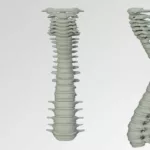Dysmenorrhea refers to painful menstrual periods caused by uterine contraction. There are two types of Dysmenorrhea, primary, which refers to recurrent pain, and secondary, which results from reproductive system disorder. Painful periods can deprive you of enjoying leisure and hinder you from performing daily activities. The team of expert gynecologists at Contemporary Women’s Care diagnoses and treats conditions that cause painful periods in Orlando, helping you improve your well-being and health.
Types of Dysmenorrhea
Primary Dysmenorrhea- Recurrent pain occurs soon after periods and becomes less with time.
Secondary Dysmenorrhea- It is caused by an underlying reproductive system disorder, which becomes less over time.
Causes
Menstrual cramps happen when prostaglandin contracts the uterus, making it tighten. The following conditions, therefore, cause secondary Dysmenorrhea.
Uterine Fibroids
Fibroid tumors in the uterine cause monthly menses to turn into a monthly nightmare since they increase bleeding and the severity of cramping.
Endometriosis
It is a condition whereby the endometrium is found outside the uterus, causing swelling, scarring, and pain.
Adenomyosis
It occurs when the endometrium embeds deep within the uterine muscles causing painful central cramps and painful sexual intercourse.
Pelvic Inflammatory Disease
It is an infection caused by bacteria in the uterus and spreads to other reproductive organs causing painful periods and intercourse.
Cervical Stenosis
When the cervix narrows as it opens, causing slow menstrual flow and increasing uterine pressure causing painful periods.
Copper IUD
It is a nonpermanent and non-hormonal birth control to help prevent pregnancy and can cause heavy bleeding and painful menses.
Uterine Defects
Women with a bicornuate uterus and septate uterus experience infertility, painful periods, and painful intercourse.
Dysmenorrhea can be caused and increased by other factors such as stress, depression, obesity, sexual abuse survivor, smoking, and poor diet.
Symptoms
· Lower back and thigh pain.
· Dizziness.
· Vomiting and nausea.
· Diarrhea.
· Bloating and constipation.
· Sweating.
· Headaches.
Remedies
Old age, having given birth often, and the use of birth control helps to reduce menstrual pain. The following remedies help to relieve pain:
- Avoiding caffeinated food, alcohol, and tobacco.
- Relaxation techniques such as yoga help relieve pain.
- Exercising regularly and jogging.
- Apply a heating pad on the lower abdomen to control pain.
- The use of aromatherapy such as lavender helps to reduce menstrual discomfort.
- Use dietary supplements such as omega-3 and magnesium to reduce period pain.
Diagnosis
Your doctor will begin by taking your medical history and conducting a pelvic exam to determine abnormalities and perform imaging tests by ultrasound, CT scan, and MRI to establish the underlying cause.
Treatment
Treatment options depend on the severity and underlying cause of the pain. Treatment is done by:
- Nonsteroidal anti-inflammatory drugs such as ibuprofen relieve pain.
- A doctor prescribes hormonal birth control pills to prevent ovulation and reduce cramping severity.
- Antidepressants to help lessen mood swings.
- Surgery to help treat endometriosis and uterine fibroids.
Consult Your Gynecologist Today
Menstruation is normal for every healthy lady. Therefore, every woman experiences a painful period at any point in her life. You might get cramps but do not suffer in silence because there are ways to make your periods less painful. Make an appointment with a team of expert gynecologists at Contemporary Women’s Care to receive a comprehensive diagnosis, remedies, and treatment, to get back your freedom from painful periods and underlying causes of period pain.








